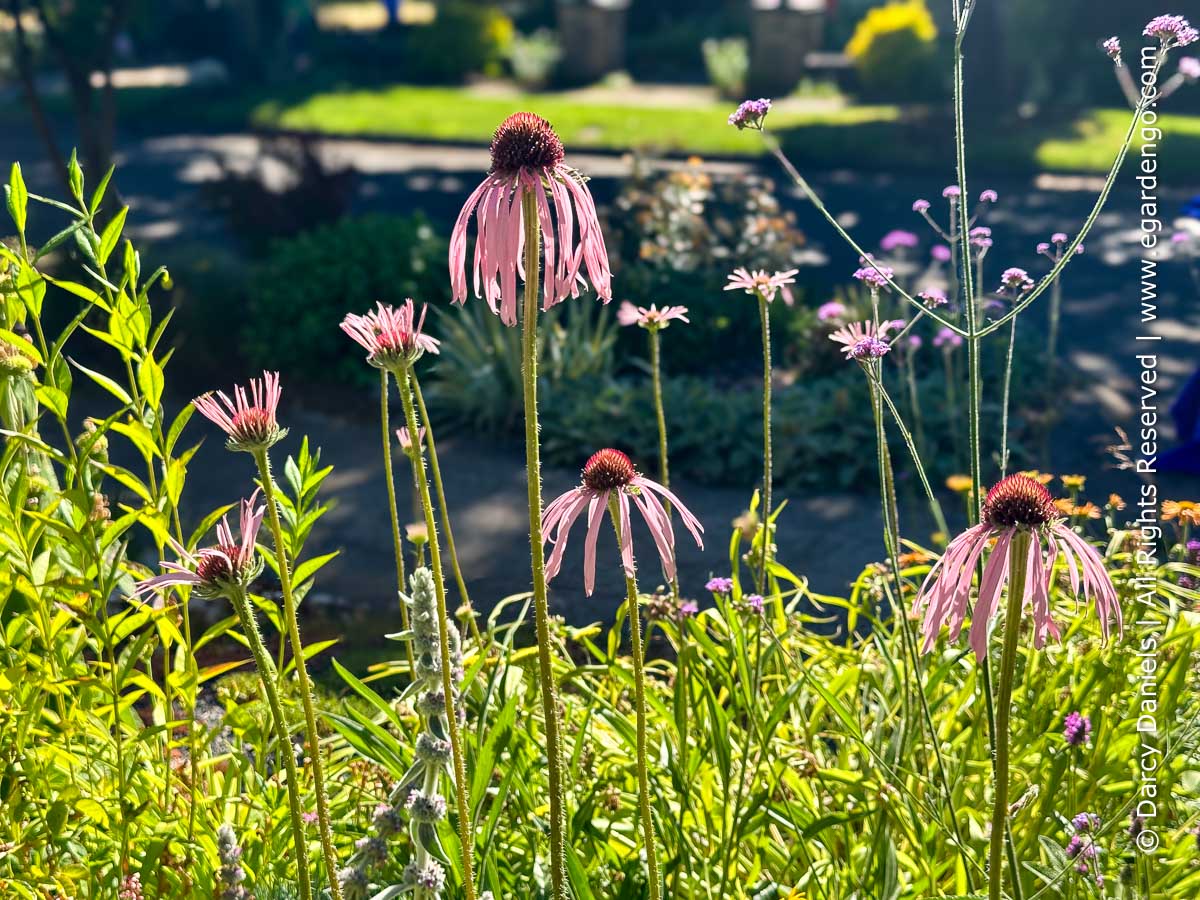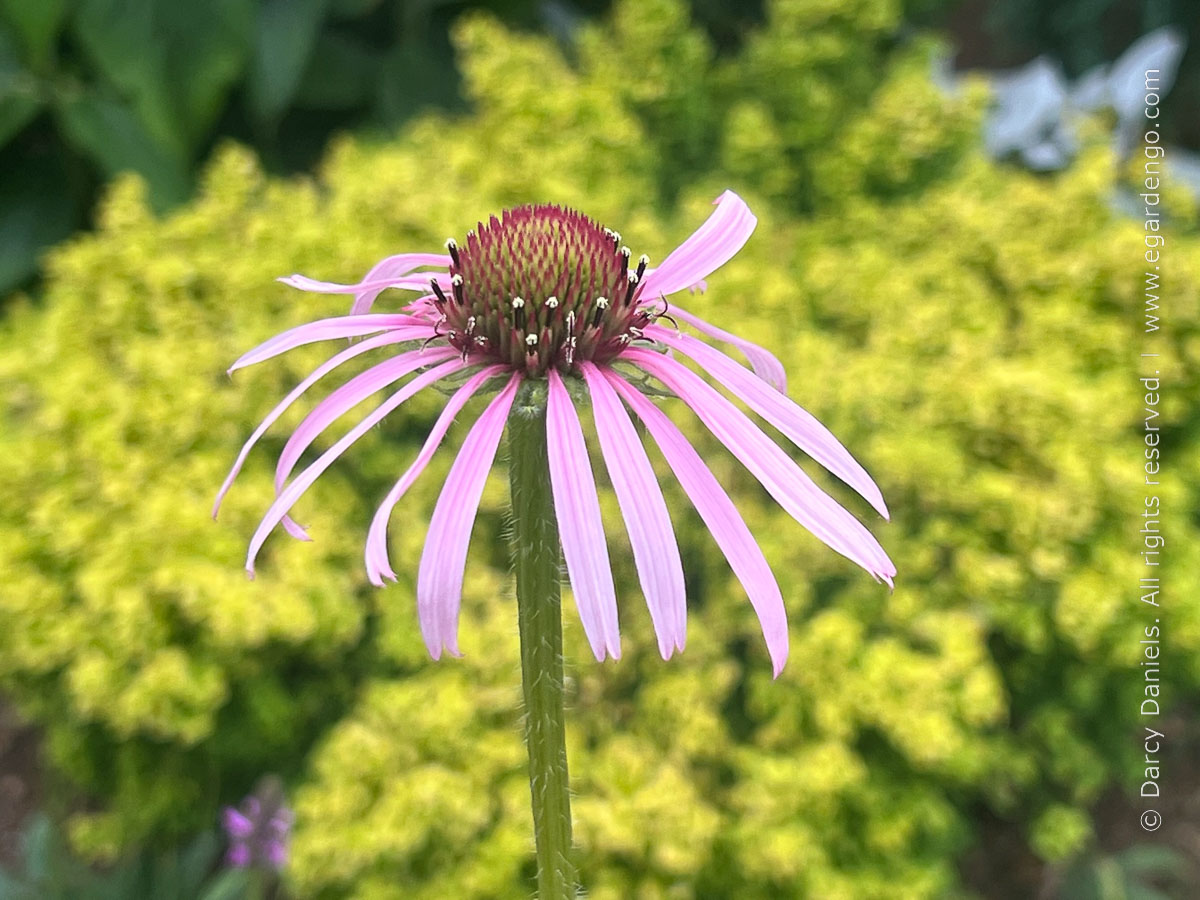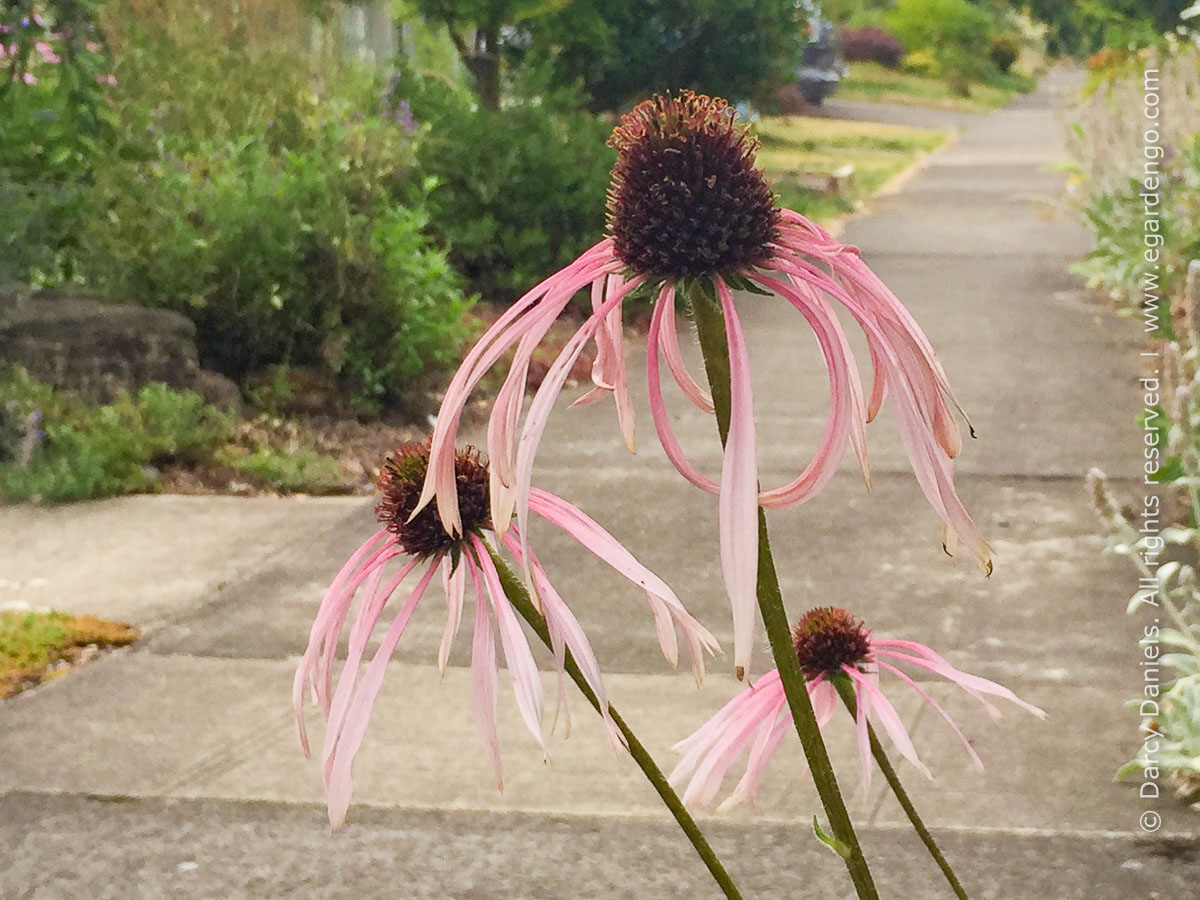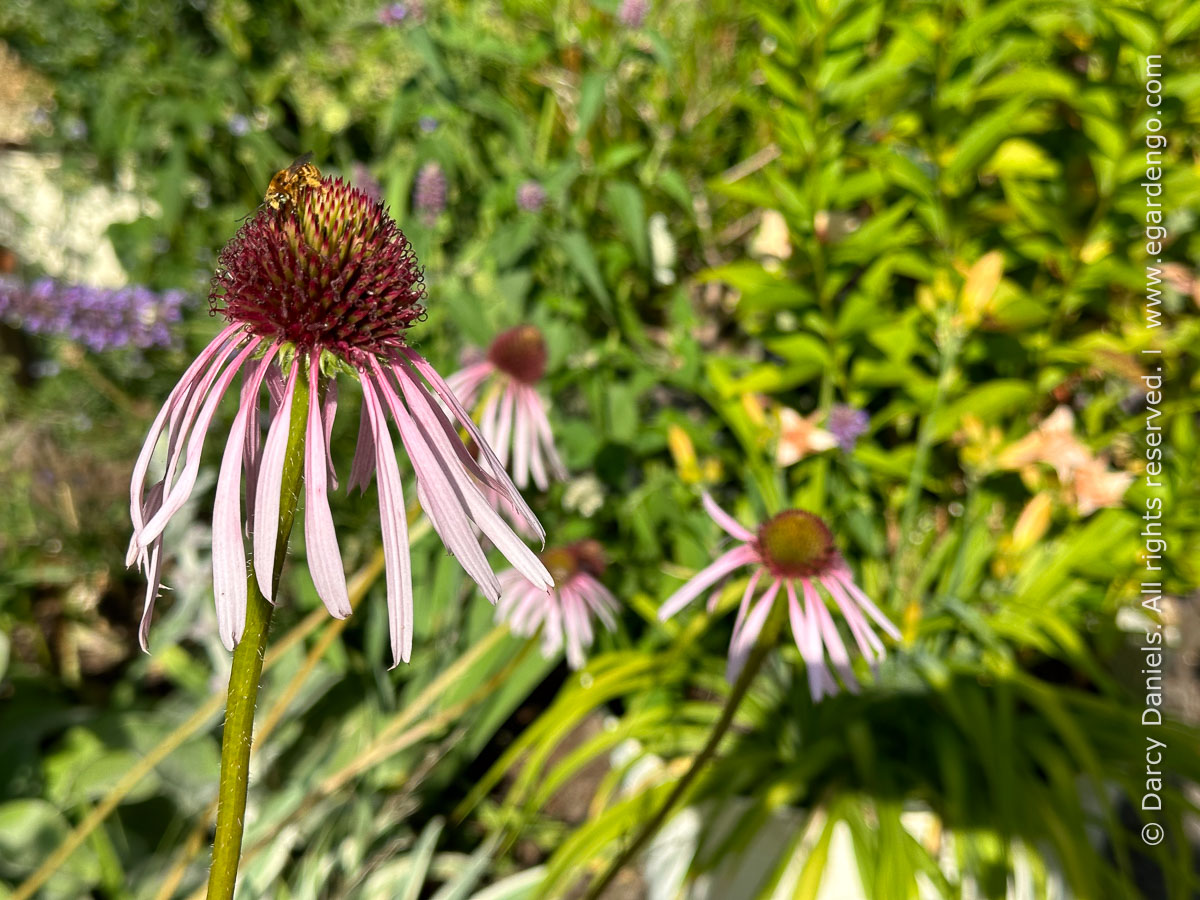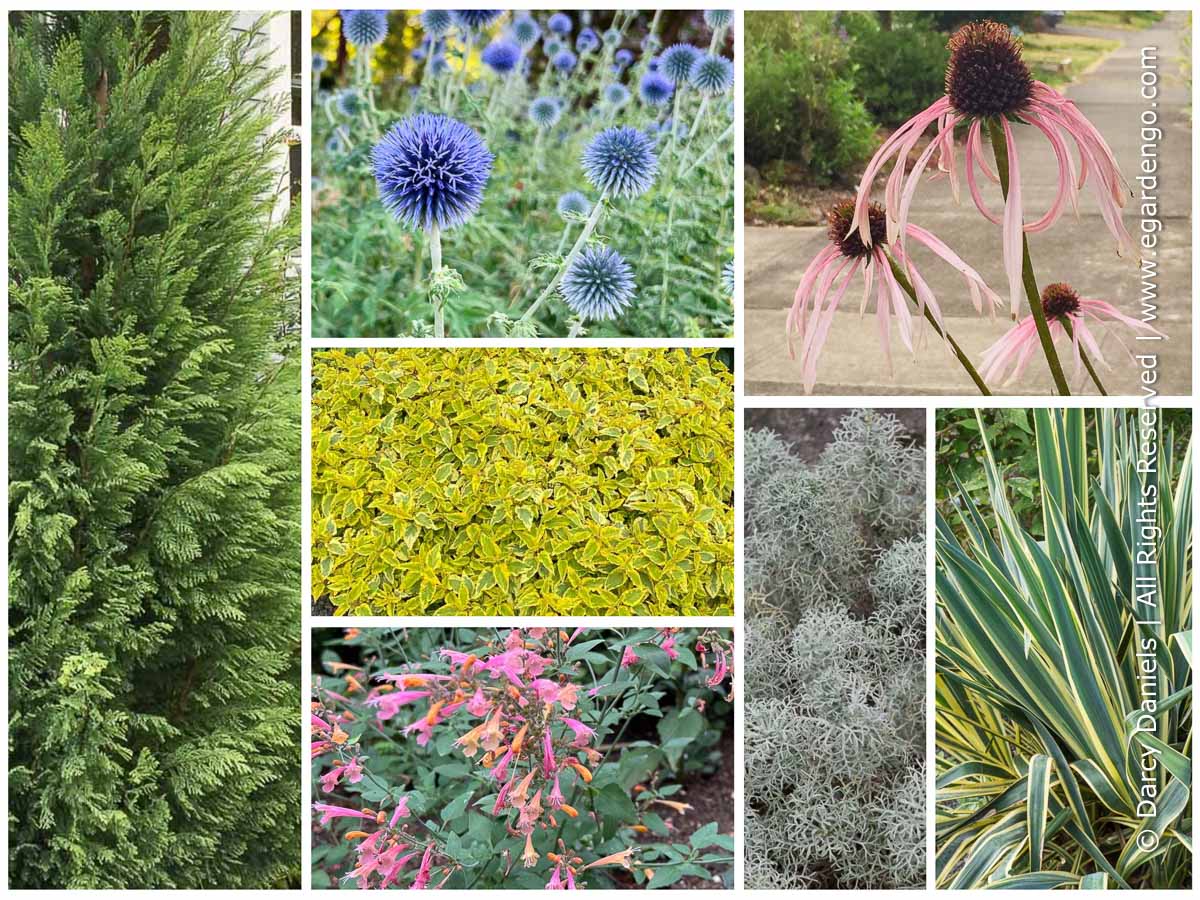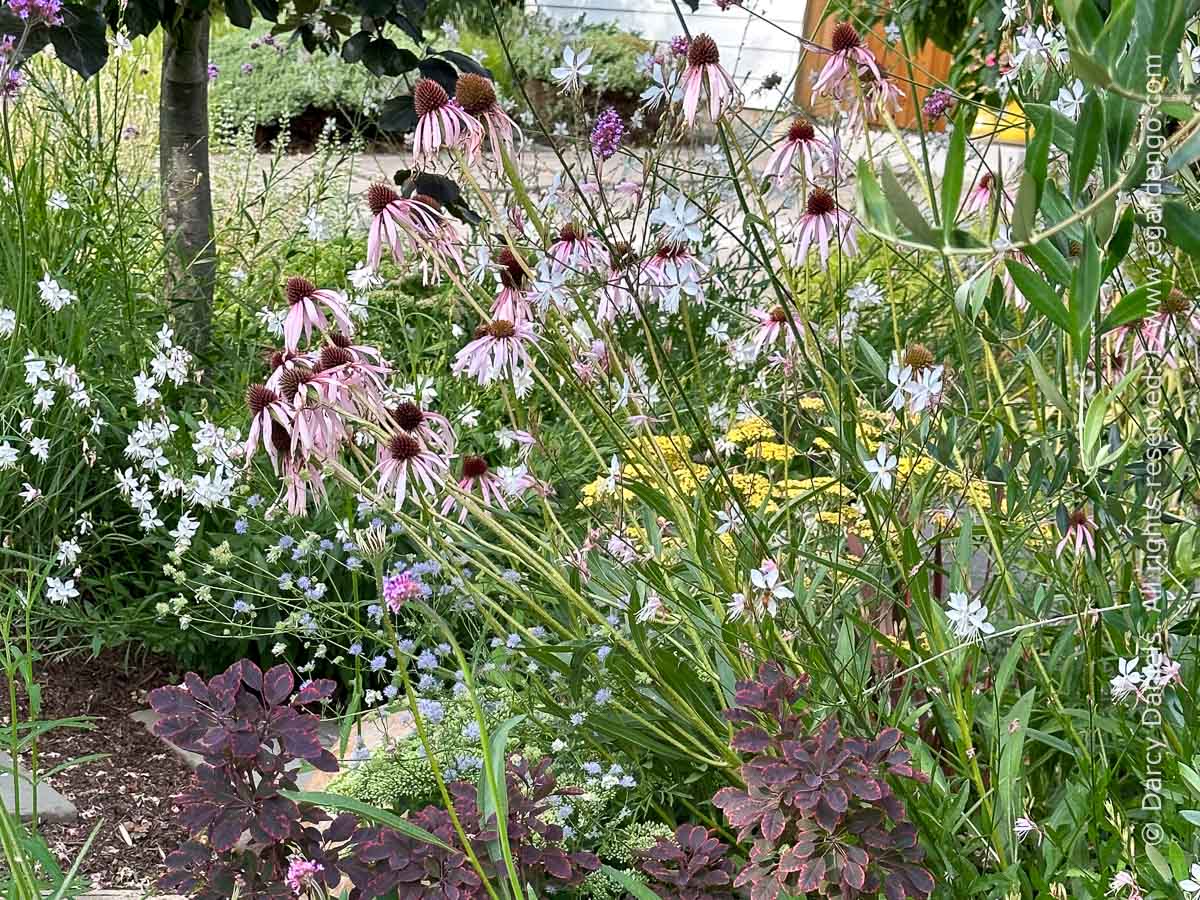Echinacea pallida
pale purple coneflower
Deciduous, Herbaceous Perennial
Growing Conditions
Zone:
3, 4, 5, 6, 7, 8, 9, 10
Exposure:
Full Sun, Afternoon Sun, Reflected Heat
Water Needs:
Drought-tolerant, Average, Low, Occasional
Soil:
Clay, Gritty, Rocky, Sandy
Description
Size: 24 - 36 tall x 12 - 18 wide
Shape / Form:
Clumping,
Irregular,
Upright
Foliage Texture:
Fine
Foliage Quality:
Fine
Features: Attracts Butterflies, Drought-tolerant / Water wise, Flowers, Long Blooming
Foliage Color:
Green
Flower Color:
Pink
Bloom Season:
Jul,
Jun,
Summer
Flower Shape:
Daisy / Composite
Uses and Applications
Landscape Uses:
Matrix, Attracts Pollinators, Beds and Borders, Cutting Garden, Food for Foraging Wildlife, Massed, Naturalize
Special Situations:
Deer Resistant, Reflected Heat
Wildlife:
Butterflies
More Design Considerations
Season of Interest:
Summer, Jun, Jul
Position / Role:
mid-plane filler, continuity creator, matrix / mingler
Plant Behavior:
Clumping, Naturalizes, Re-seeds in some conditions
Care and Maintenance
Maintenance Level:
medium
Maintenance Tasks:
Deadheading, Divide Plants to Rejuvenate
Suitable Substitutes
Perfect Partners
Plant Combos
-
Sun-Loving Plant Combination That Thrives All Season: A Garden Idea for Year-Round Beauty
Focus: Building Block, Hellstrip / Parking Strip, Native and Habitat, Saving Water
view combo
Exposure: Afternoon Sun, Full Sun
Zone: 5, 6, 7, 8, 9 -
Meadow-like Perennials Flanked by Evergreens for All-Season Structure
Focus: Building Block, Hellstrip / Parking Strip, Native and Habitat, Saving Water, Curb Appeal, Cutting Garden, Mixed Border, Pleasing Seasonal Flow
view combo
Exposure: Afternoon Sun, Full Sun, Reflected Heat
Zone: 7, 8, 9

